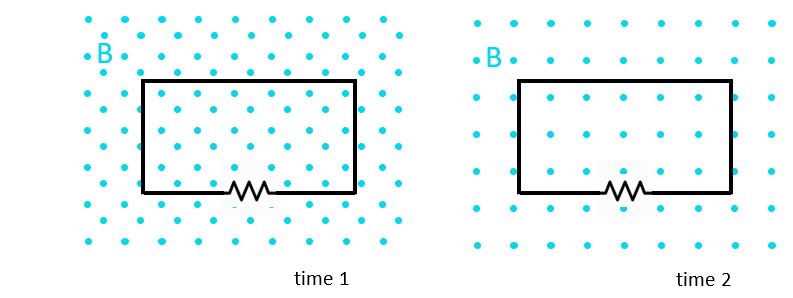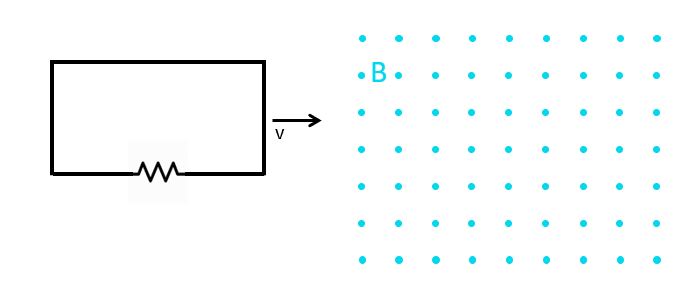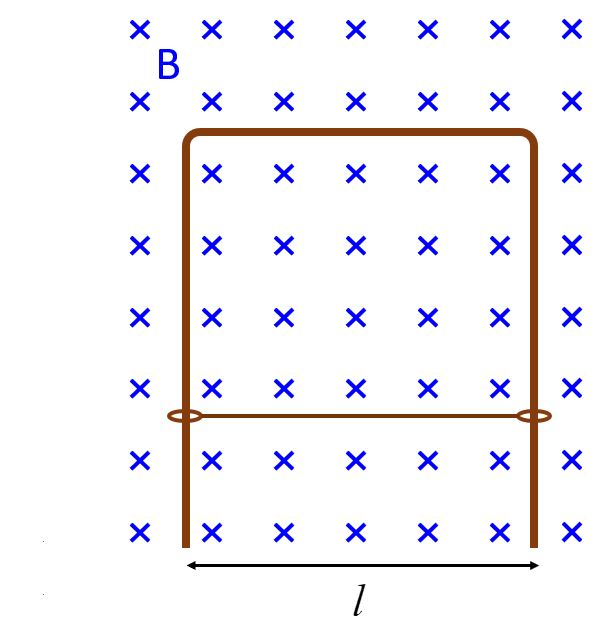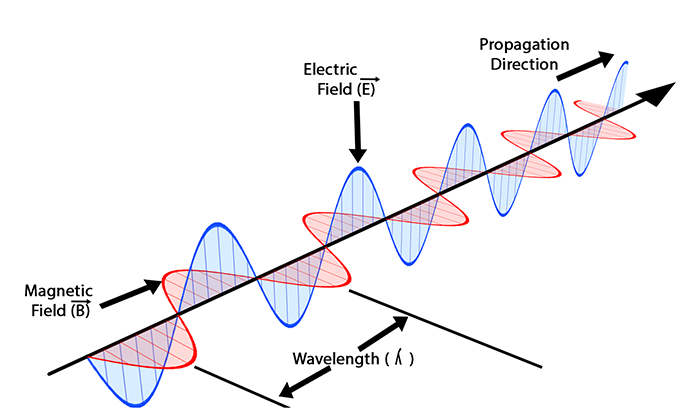Faraday's law

Faraday knew that electrical currents cause magnetic fields. He showed that the inverse is also true,
that changing magnetic flux through a conducting loop creates an electrical current in the loop.
Faraday’s law of induction states that a changing magnetic flux induces an electromotive force,
which creates a current in a wire.

There are two possible sources for induced EMF, according to Faraday's law. The induced EMF is equal to the line integral of the electric field, and it is also equal to the negative time derivative of the integrated magnetic flux.

The magnetic flux through the loop can change in several ways to induce an EMF. If the strength of the magnetic field
varies over time, an EMF is induced.

Either a change in the magnetic field or a change in the area of the loop (or both) can induce an EMF.
For example, an EMF is induced if the conducting loop rotates or changes size.

An induced EMF also is produced if the conducting loop is moving such that the magnetic flux through the loop
changes over time.
Sample questions
1. A conducting loop moves at constant velocity as shown, through a region of constant magnetic field.

Which graph correctly depicts the current induced in the loop? Assume counterclockwise current is positive.

2. Calculate the magnitude of induced current in a circular conducting loop of radius 6.0 cm and resistance of 0.020 ohms.
Assume the loop is in a magnetic field perpendicular to the plane of the loop, that changes from 1.0 T to 0.40 T in 1.2 seconds.
3. A conducting loop is halfway into a magnetic field as shown. Suddenly the B field starts to increase. What happens to the loop?

A. It is pushed to the left
B. It is pushed to the right
C. It is pushed upward
D. It is pushed downward
E. It does not move
4. The conducting loop is fixed, but the slide wire with mass m, length l and resistance R is free to fall in a magnetic field with strength B.
What is the terminal speed of the slide wire?

Maxwell's theory of EM waves

animated gif